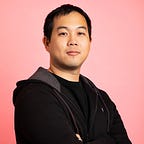Guide to getting your first UX Design job
In my spare time, I work with aspiring designers to prepare for job applications and design interviews. After hearing about the interview experience from dozens of UX designers, I got a good sense of the common user experience design interview process and what to expect at each step. Below is a summary of my learnings.
The phone interviews
Most interviews begin with the phone screening. You will either speak to either a recruiter, designer, hiring manager, or all of the above.
Speaking with a recruiter
Most recruiters ask about your design background and try to get a sense of what you are looking for in your next role. You may be asked to talk about your career history, elaborate on the specific role you had in the past, or clarify your level of skill proficiency.
To prepare for the initial call:
- Do your research on the company and the role
- Research your desired salary
- Remember to about what to expect next in the interview process so you can prepare according
Speaking with the designer(s)/hiring manager
This is the call that you will need to dig into your design background as well as the design process.
What to expect:
- Discuss your past job experience and skillset
- Walkthrough at least one of your projects in detail to talk about your project goals, challenges, and the solution you came up with
- You may be challenged with technical(design) or situational questions such as how you would approach a hypothetical redesign of an experience
Design challenge/exercise/take-home assignment
Some companies may choose to give you a design problem to solve as a requirement to advance to the next stage. Without getting into whether this is a good practice or if you should take it on, I want to briefly touch on two general tips to excel at this stage.
Shoot for the minimum but aim higher
Pay attention to the scope of the project, the timeline, and the deliverables. The direction may ask you to only do a few hours of work but you probably need to put extra time in if you want to do the job well. Make sure you submit your final designs
Document your process
Your deliverable should explain your design process and decision without you narrating over it. It means that you need a well-documented deliverable to communicate your project effectively. In addition, there is a pretty good chance that if you advance to the next stage you will be asked to discuss or present your work. Therefore, you should be capturing relevant artifacts as you work on the design.
The on-site visit
This is the most stressful part of the interview process for most people but it is also the last stage so you can take a big breather afterward. There are a few possible components to the on-site interview including the design presentation, the 1-on-1 interviews, and the whiteboard challenge.
UX design presentation
You will typically be given 30–60 minutes to present a few of your projects. It’s up to you what to present and in what format but most people opt-in for a presentation deck and talk about 3 projects to show some variety.
Tips to prepare for the presentation:
- Have a small section to talk a little about yourself before jumping into the projects
- Consider what projects to present based on the company/job you are applying for. Ideally, the work should be relevant to what the role will be doing
- Practice the timing for each project and bake in some time for questions or discussion
- Practice more
1-on-1 interviews
For this portion of the interview, you will be talking to individual team members and each person may have a different background (product manager, designer, researcher, engineer, etc..)
Whiteboard challenge
Most designers are very nervous about this part of the interview, which can take place during one of the 1-on-1s. The idea of the whiteboard challenge is to put the designer under pressure and access his or her problem-solving skill. To prepare for this, there are plenty of resources online from general tips and tricks to sample design problems. Many people I spoke to also read and found the Solving Product Design Exercises book to be very helpful.
Bonus: Post-Interview
It’s a big relief to get through all the previous interview steps. Just to make a note that your work is not done after you walked out of your on-site interview. It is a good practice to send a thank you letter to the team (ask the recruiter to relay the message) to end on a good note. In addition, you may also consider reaching out to the people you met to ask for feedback as a way to identify what to improve on for future interviews.
Conclusion
I hope this post helped you gain a better understanding of the UX design interview process and therefore can be better prepared for your upcoming interviews.
If you have more questions about the UX design interview process, feel free to post a comment here or reach out to me on Twitter.
